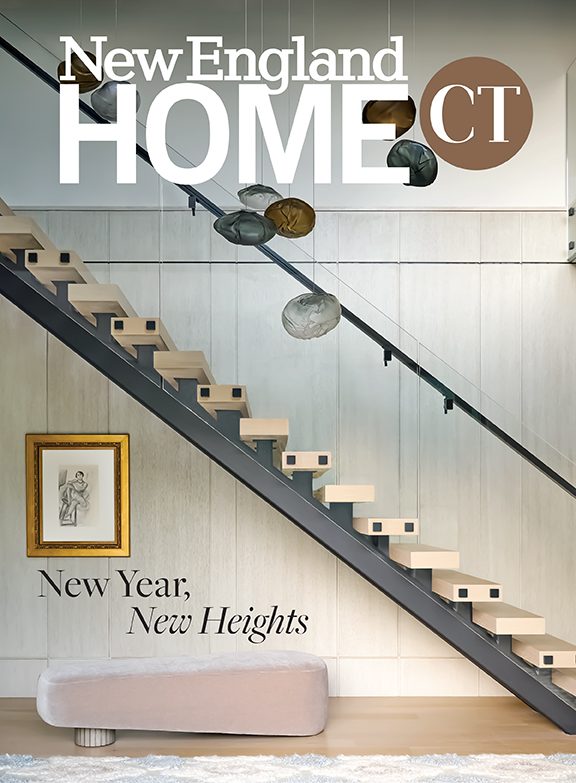The Accidental Artist
August 29, 2012
Text by Nathaniel Read
You can see Tom Patti’s work—everything from crisp-edged, multi-hued cubes of glass to entire walls of iridescence that change as you walk by them—in major cities and museums around the world. His career as a glass artist, however, came about rather like the discovery of penicillin: the result of a combination of experiment and accident.
In 1970, after earning a BFA and MFA in industrial design from the Pratt Institute in Manhattan, Patti returned to the Berkshires, where he’d grown up. He bought himself a cheap old farmhouse in the woods and devoted himself to conducting aesthetic experiments. Always an investigator and lover of technology, he wanted to find ways to combine the artist in him with the inventor. He inflated plastics with compressed air to create prototypes of low-cost housing material that looked a bit like metal crates filled with balloons. He created eccentric little sculptures by heating and blowing into plastic drinking straws. He scrounged through dumpsters and used what he found not only to make art, but to build himself a studio that would have made Rube Goldberg proud.
One day he decided to heap some fire bricks he’d found and heat a pile of scrounged window glass with a torch, just to see what would happen. To his amazement, he says, “It turned orange!” He wondered what would happen if he introduced air. So he broke the radio antenna off his car, inserted it into the molten blob and blew. “It was made of chrome-plated brass,” he says, “so it melted.” He tried again with a length of scrap water-pipe, but nothing seemed to happen. The next day when he examined the cooled glass, however, he found a tiny air bubble, which pleased him so much he did it some more. Then he went off to investigate something else.
Patti was perfectly content in those counter-culture days getting by on odd jobs, including washing dishes at his wife’s diner. Then, in 1975, their daughter was born—an event that has a tendency to change one’s priorities. He cast around for a way to make more money and, when a friend admired his glass experiments, packed them into a paper bag and brought them to Doug Heller, who runs a glass gallery in Manhattan.
At the time, most glass artists were focusing on traditional craft methods and personal expression. “You couldn’t separate the object from the maker,” Patti says. “It was a very ego-centric approach.”
He was more interested in exploring the basic interactions between glass and air. He wanted his work to bear almost no mark of his hand, to be anonymous, almost industrial. Heller thought they were unlike anything he’d ever seen, and gave Patti his first show. Disdaining romanticism, Patti named these small glass objects in minimalist terms, such as Biaxial Airtrap with Pinlines. The Museum of Modern Art bought a piece, and so did the Metropolitan Museum of Art. Andy Warhol not only purchased Patti’s work, but made a silkscreen portrait of him.
Today Tom Patti works in a Pittsfield, Massachusetts, industrial park, which seems to fit a man who gets just as excited about designing the custom metal framework housing his new installation at the Berkshire Museum as he does about fusing sheets of glass. At sixty-nine, he is vigorous and smiley, with dark, swept-back hair. Most days he wears red Pumas and jeans, the pocket of his blue button-down stuffed with pens. The son of an Italian barber, he says, “I’m proud of having grown up in Pittsfield.” As a child he liked to dig in the General Electric dump behind his house and bring things home so he could take them apart and see how they were made. Sometimes, he says, “I’d start digging when my classmates went off to school, and I’d still be digging when they came home again.”
Patti is still like that. He’s fascinated by technological innovations and manufactured materials. He has made a sculpture out of G.E. plastics, and designed and built an entire load-bearing wall of glass and glass-fiber at the Owens Corning world headquarters.
He has built public installations of multi-layered glass in Miami and New York. He designed a glass atrium for a home that provides either clear views or privacy, depending on the angle of the viewer, and changes colors and shapes with the angle of the sun.
“When you push the boundaries,” he says, “you increase the likelihood of some serendipitous result. You see new things.” •
Editor’s Note: Tom Patti is represented by the Heller Gallery in New York City, (212) 414-4014, www.hellergallery.com. You can also see his work at www.tompatti.com.
Share
![NEH-Logo_Black[1] NEH-Logo_Black[1]](https://b2915716.smushcdn.com/2915716/wp-content/uploads/2022/08/NEH-Logo_Black1-300x162.jpg?lossy=1&strip=1&webp=1)












You must be logged in to post a comment.